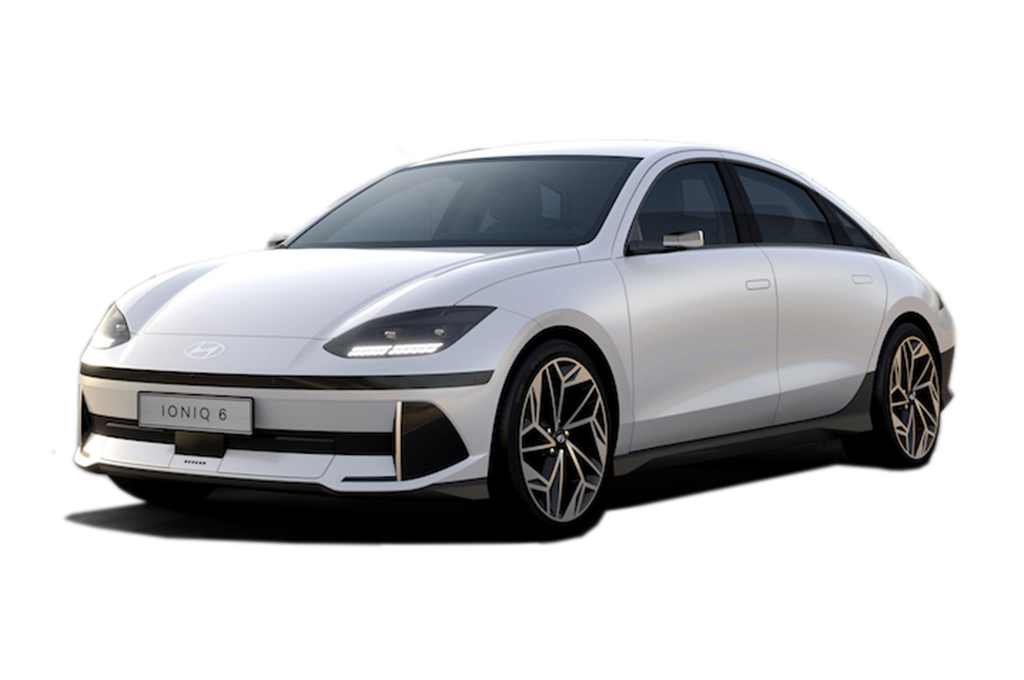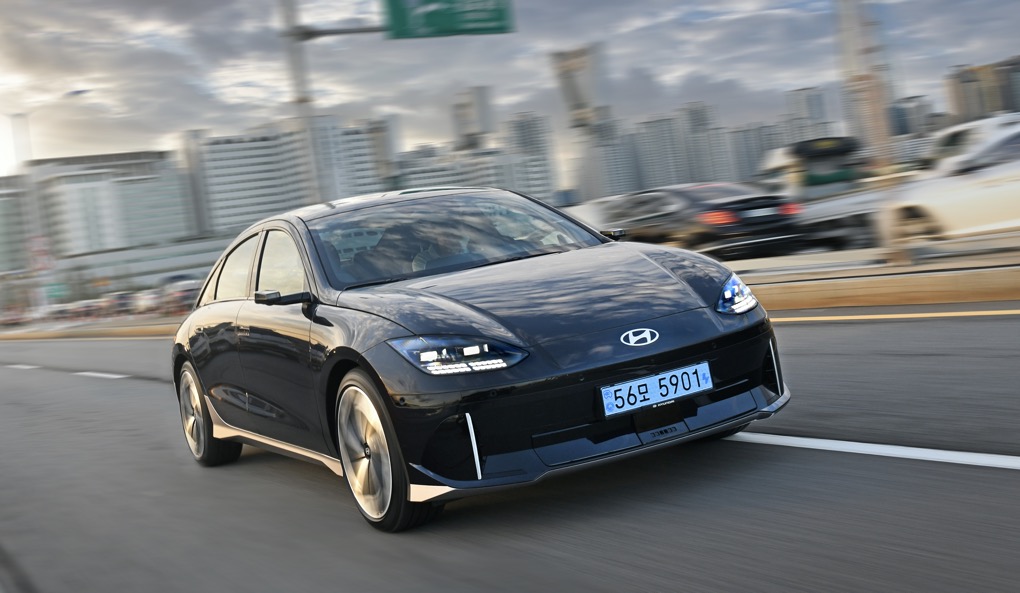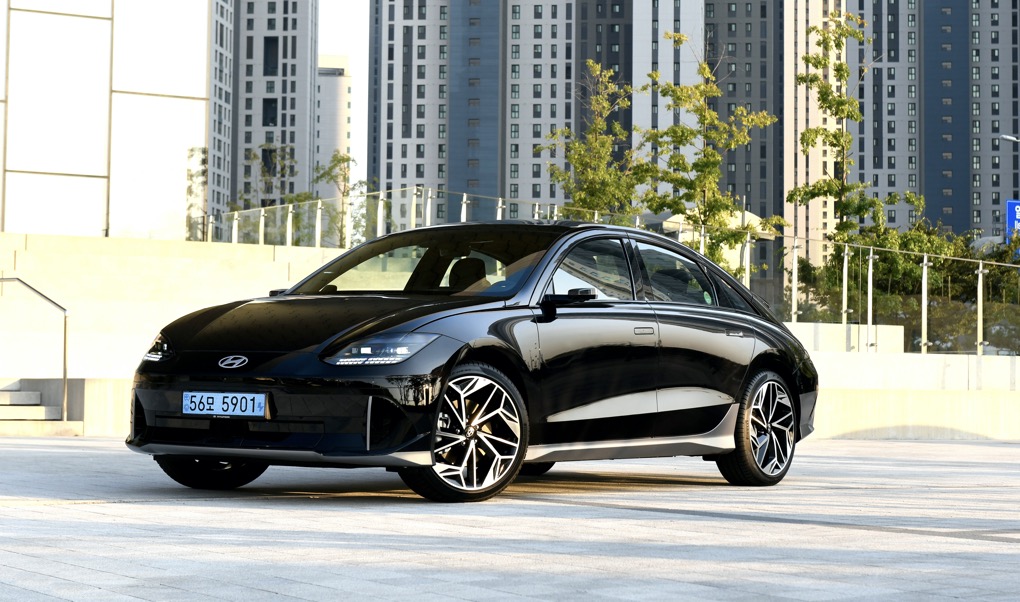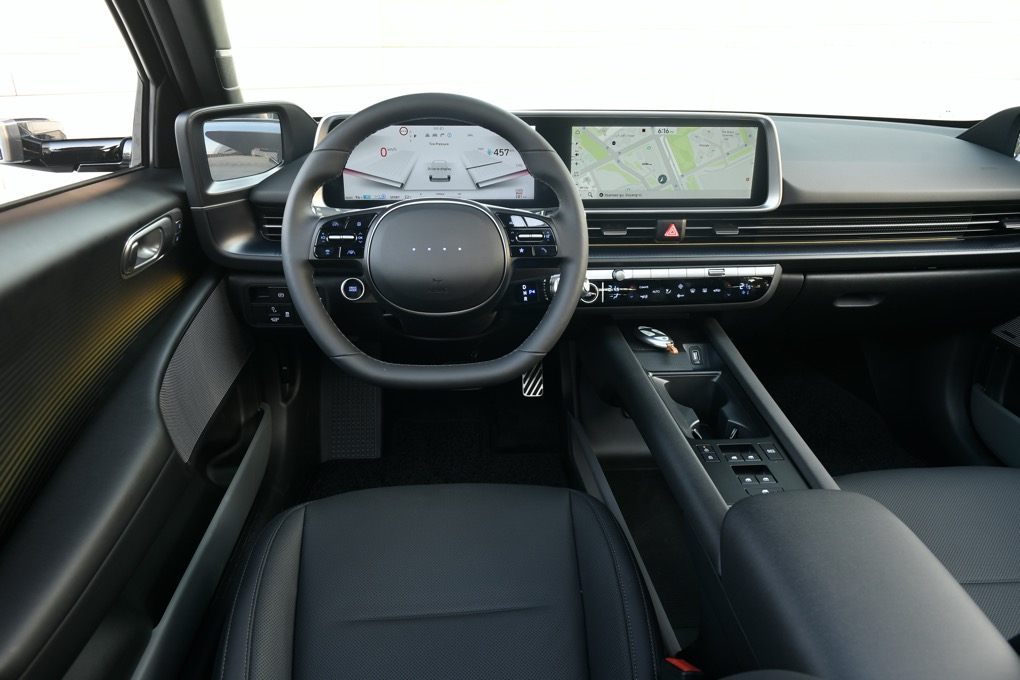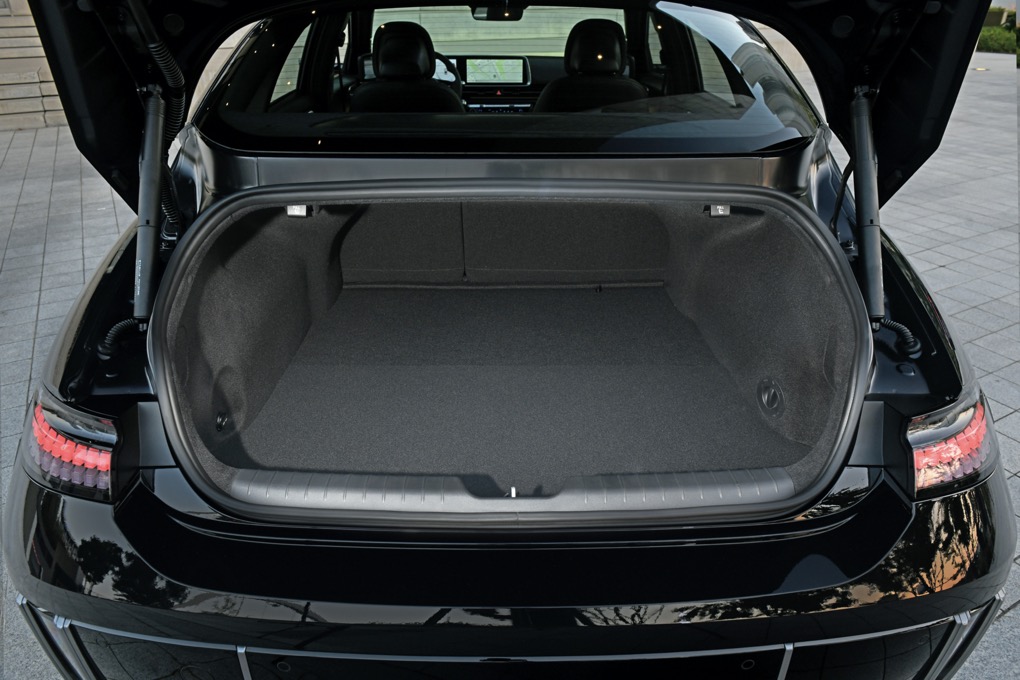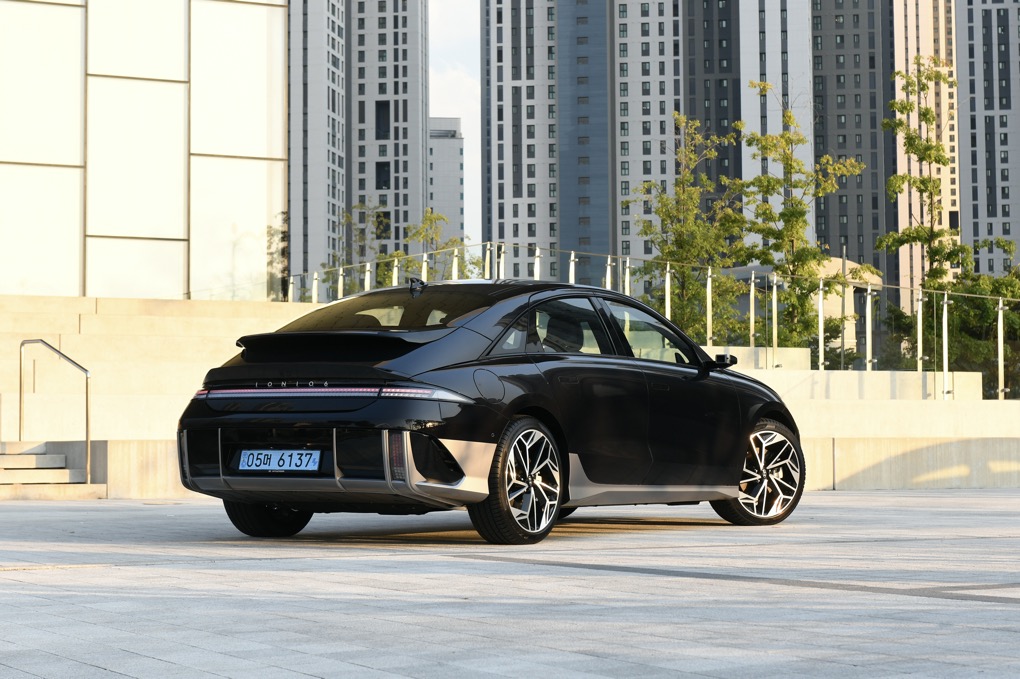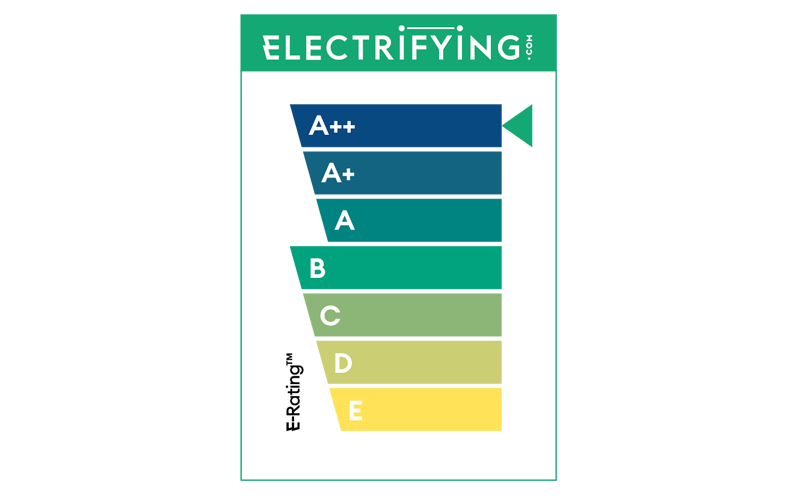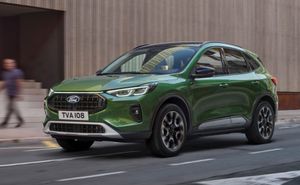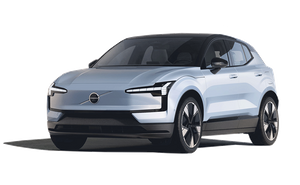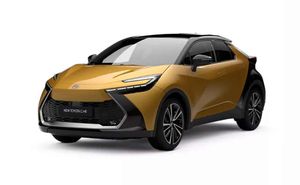The range starts at £46,745 for the Premium Rear Wheel Drive, rising to £53,745 for the Ultimate All Wheel Drive. That makes the Ioniq 6 more expensive than a Tesla Model 3 and bang in Polestar 2 territory. It will need to be good to compete here.
Evolved from the stunning Prophecy concept car, the Ioniq 6’s design brings to mind the Mercedes-Benz CLS but is apparently inspired by ‘streamliner’ designs of classic coachbuilt cars from the 1930s, themselves inspired by earlier leaps in aircraft aerodynamics.
Together with detail touches including flush door handles, active front air flaps and an important if seemingly inconsequential piece of trim in the front wheel arch, the Ioniq 6’s coefficient of drag tumbles to 0.21Cd –much better than the Ioniq 5’s bluffer 0.29Cd and one of the lowest of any car on sale.
At 4,855mm long, the Ioniq 6 is a significant 220mm longer than the Ioniq 5, and while its long arc of a roofline peaks much lower, it’s still 60mm or so taller than a BMW 3-series – explaining why there’s so much room inside, and why it looks somewhat tall and skinny. We’d certainly say the Ioniq 5 is the more cohesive design overall.
Inside you’re greeted by a spacious interior and a slick, clean feel courtesy of aluminium-look buttons, hidden-until-lit control buttons and twin 12-inch screens that combine to provide infotainment controls and a digital instrument binnacle.
Spec the optional digital side-view mirrors and two digital screens angle out from either end of the dash – the smaller surface area of the camera pods mounted to the bodywork produces less drag and accounts for almost a mile of the maximum driving-range figure.
Hyundai Ioniq 6 battery, range and charging
Just like the Ioniq 5 SUV and its Kia EV6 sibling, the Ioniq 6 is based on the E-GMP modular platform, bringing 400V/800-volt and ultra-fast charging capability.There are two different lithium-ion batteries to choose from, though the UK is unlikely to offer the entry-level 53kWh battery and its extremely modest 149bhp power output.
The upgraded 77.4kWh ‘Long Range’ models offer a choice between rear- and all-wheel drive and either 18- or 20-inch alloys. Rear-wheel drive models have 226bhp and can go for the headline 384 miles on smaller wheels, while all-wheel drive gets the full 321bhp with a trade-off in range to a still impressive max of 364 miles. We have tried the car in two different locations with the bigger wheels and failed to get anywhere near those figures though - in fact the range meter show numbers beginning with a '2'. As soon as we get the chance to have longer than a few hours with the car, we will update you.
The big battery takes around eight hours to fully charge on an 11kW charger, with both dropping to a quoted 18 minutes for a 10-80 per cent boost on a 350kW ultra-fast charger.
The sat-nav also flags up charge points, making it easy to plot your route.
Hyundai Ioniq 6 driving
We tested the top-spec Ioniq 6 with the big battery, AWD and 20-inch alloys in Korea and then the rear drive car here in the UK. Hyundai has done a good job finessing the Ioniq 6 powertrain, so it’s a very natural machine to just jump in and drive – the accelerator response feels prompt without being edgy and the brakes are similarly well judged in their response. You can adjust the experience through Eco, Normal and Sport modes, and increase or decrease the level of re-gen (how strong the deceleration feels when you release the throttle) with gearshift paddles on the steering wheel, but the overriding sense is always harmonious with nicely calibrated control.
This is a largely refined driving experience at speed too – wind and road noise are well suppressed on the motorway, with acoustic glass, ‘de-coupled’ carpets and specially optimised Pirelli tyres all playing a part, and the suspension mostly strides with lulling if nicely controlled movements.
Fluid-filled lower suspension arm bushes and variable flow shock absorbers that adjust damping force to vehicle speed help here, though there’s still room for improvement over smaller imperfections, where the Ioniq 6 can be a little too reactive.
Promisingly, the Ioniq 6 does flow nicely over twistier roads. Its steering has a chunky, consistent feel from lock-to-lock, which helps build driver confidence, the chassis darts into corners keenly (you really sense that the battery’s weight is low and centred between the axles) and the suspension makes it easy to stitch together sequences of corners in a smooth, fluid rhythm. It’s still a way from a Tesla Model 3’s perkiness, but UK cars will get a bespoke chassis tune aimed at sharpening the dynamics up, so we’ll revisit these comments then. On the bigger wheels the suspension does struggle to calm pot-holed and lumpy back roads though.
Performance surges keenly from rest to high motorway speeds, but it’s best described as perfectly strong enough rather than particularly lusty, just as the 5.1sec 0-62mph time suggests – you don’t need more urge than this for regular driving, but might want a bit more.Three intensities of futuristically fizzy soundtrack can accompany your drive, culminating with ‘Largest Change’, which sounds like you’re being buzzed by an electric plane, but our preference was to knock it all off and bask in the silence.
We also weren’t so keen on the digital side mirrors. You’d no doubt get used to the screen placement inboard of normal mirrors (though we didn’t acclimatise fully during a day of driving), but more problematic is the pronounced step between looking at the screen and making one final over-the-shoulder check before changing lanes. It’s too much of a transition.
Overall, though, the Ioniq 6 is both a satisfyingly refined drive on the motorway and a decent steer over more challenging back roads.
Click HERE to download your free Beginners' Guide to Going Electric - powered by Hyundai
Hyundai Ioniq 6 practicality
There’s no doubt the Ioniq 6 would look better with a lower roofline, but the pay-off is a loungey, spacious and highly relaxing feel inside. Those over six-feet tall have good headroom, and deeply contoured door casings leave plenty of room to hang your knee at an angle. Even the standard seats in our test car are highly comfortable with nicely padded bases, though optional Relaxation Comfort seats will take this a step further. There’s no shortage of storage up front either, including a long flat tray beneath the floating centre console and a central storage cubby so deep it’s surprising you don’t drag your fingertips along the road.
But it’s in the back that you really feel the benefit – a 2,950mm wheelbase might be 50mm shorter than the Ioniq 5, but there’s a limousine-like chasm between knees and the front seatbacks, plus a flat floor and still plenty of headroom for six footers. You can properly stretch out.
The boot aperture is a little narrow and awkwardly shaped, but there’s plenty of space once you get in there – there are no figures, but insiders hint at Tesla Model 3 levels of luggage space in the boot, if not the negligible frunk.
Hyundai Ioniq 6 verdict
The Ioniq 6 might not have the retro boxy cool of the 5, but it’s hard to ignore its huge 69-mile maximum improvement in range to 384 miles unlocked by its sleek shape, especially if you want to use your electric car for longer, more frequent trips. That figure has a big question mark over it at the moment though - we need longer with the car to fully test the efficiency, as it couldn't get close to the figures on our drives.
Inside, the Ioniq 6 is spacious, relaxing and nicely designed, and reveals a similarly calming character on the move – plus it’s more than capable of stepping up to the plate over more sinuous test routes.





.png)



